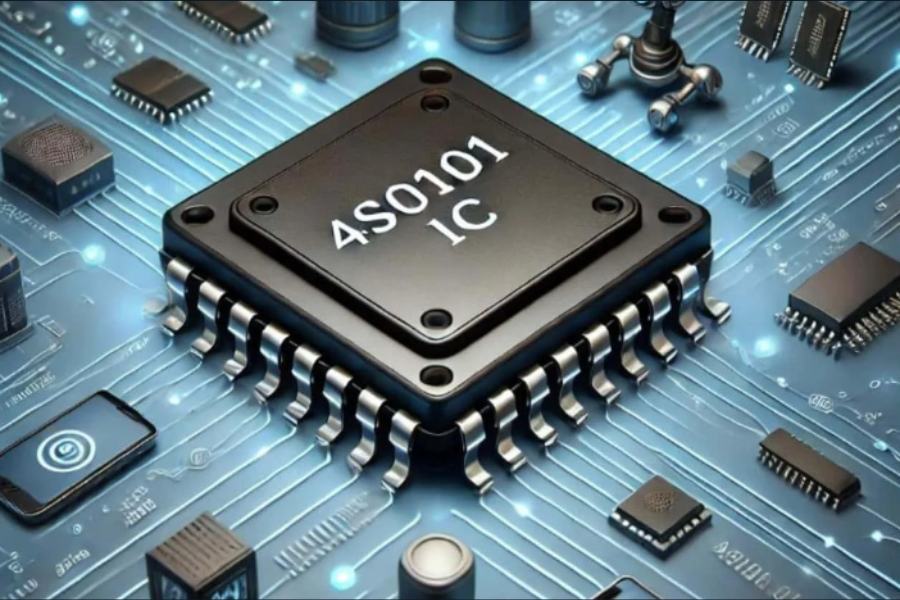Getting Started with the 4S0101 Chip: A Beginner’s Guide
Welcome to the exciting world of microchips! If you’ve come across the 4S0101 chip, you’re in for an adventure. This compact yet powerful component offers endless possibilities for your electronic projects.
Whether you’re a hobbyist crafting innovative gadgets or an engineer looking for a reliable part, mastering the 4S0101 can significantly enhance your designs. Let’s dive into the basics and explore what makes this chip a standout choice for beginners and experts alike!
Understanding Microchips: The Basics
Microchips are the driving force behind modern electronics, acting as the “brains” of devices like smartphones, computers, and household appliances. These tiny silicon wafers house integrated circuits that process information and execute commands efficiently.
At their core, microchips operate using binary code, communicating through a series of zeros and ones. This seemingly simple system allows them to perform complex tasks at incredible speeds.
While the layout of microchips may seem intimidating, understanding the basics is essential. They consist of transistors, diodes, and capacitors that work together to manage electrical signals. As technology advances, microchips have become smaller yet more powerful, making them essential in fields such as computing, healthcare, automotive systems, and more.
Why Choose the 4S0101 Chip?
The 4S0101 chip is popular for several reasons. Its small size makes it easy to integrate into a variety of projects without taking up too much space. Here are some of its key advantages:
- Low Power Consumption: Ideal for battery-powered applications, the 4S0101 helps extend the life of your devices without sacrificing performance.
- High Processing Speed: Its fast data handling ensures smooth operation and enhanced functionality in your designs.
- Versatility: Whether you’re working on consumer electronics, industrial machines, or IoT devices, the 4S0101 adapts well to different environments.
- Support Community: The robust user community surrounding this chip offers valuable resources, so you’ll never feel alone when troubleshooting or seeking advice.
Selecting and Purchasing the Right 4S0101 Chip
When choosing the 4S0101 chip for your project, it’s essential to match the chip’s specifications with your needs. Consider factors such as:
- Power Consumption: Ensure the chip’s power requirements fit your design, especially for portable or low-power devices.
- Processing Speed and Memory: Make sure the chip’s capabilities align with the complexity of your project.
- Supplier Reputation: Buy from reputable vendors to ensure the chip is authentic and of high quality.
- Compatibility: Check if the 4S0101 works with your existing hardware and software.
- Price Comparisons: Shop around to find the best deal and consider bulk discounts if you’re working on a larger project.
Lastly, always review warranty and return policies before making a purchase to protect your investment.
Installing and Setting Up the 4S0101 Chip
Installing the 4S0101 chip requires precision but can be straightforward with a few tips:
- Prepare Your Workspace: Ensure your work area is clean and free from static electricity to prevent damage to the chip.
- Read the Datasheet: The chip’s datasheet contains crucial information on pin configurations, voltage levels, and other specifications that will guide you during installation.
- Soldering: Use a fine-tipped soldering iron with minimal heat to avoid damaging the chip. Precision is key here.
- Double-Check Connections: Before powering up your project, verify all connections are secure and correct.
- Gradual Power-Up: Once everything is in place, power the circuit gradually and monitor voltage levels closely to ensure everything is working as expected.
Troubleshooting Common Issues
As with any microchip, you may encounter some issues when working with the 4S0101. Here are a few common problems and how to resolve them:
- Power Supply Fluctuations: Ensure a stable power supply and double-check your wiring to avoid voltage drops.
- Data Transmission Errors: Review your software settings to ensure you’re using the correct protocols for communication between devices.
- Loose Solder Joints: Inspect all solder joints for secure connections. A loose connection can cause erratic behavior or resets.
- Sluggish Performance: If the chip seems slow, optimizing your code can improve responsiveness and functionality.
By addressing these common issues, you’ll ensure your projects run smoothly and maximize the performance of the 4S0101 chip.
Looking Ahead: Future Applications of the 4S0101 Chip
The future of the 4S0101 chip is bright, as it continues to find new applications in cutting-edge technology. As industries move toward more automation and connectivity, this microchip is positioned to play a significant role.
- IoT (Internet of Things): The 4S0101’s low power consumption and compact design make it ideal for IoT devices, enabling efficient data processing in smaller gadgets.
- Edge Computing: With advancements in AI, the 4S0101 could be used in edge computing applications, processing data locally for real-time analysis with minimal latency.
- Healthcare: Wearable health devices can leverage this chip for continuous monitoring, providing accurate data transmission to medical professionals.
As technology continues to evolve, the 4S0101 chip will likely be at the forefront of innovative applications across various industries.
Conclusion
The 4S0101 chip is a fantastic entry point for anyone diving into microchips. Its versatility, power efficiency, and support from a vibrant community make it an ideal choice for beginners and professionals alike. By taking the time to understand its features and applications, you’ll be able to unlock its full potential in your projects.
While it may feel challenging at first, experimenting with the 4S0101 chip can lead to exciting discoveries and innovative designs. Embrace the learning process, troubleshoot issues as they arise, and keep exploring new ways to push the boundaries of what this chip can do. The world of microchips is full of possibilities—let the 4S0101 be your guide!
Explore trending topics and comprehensive analyses at Craze Radar.






